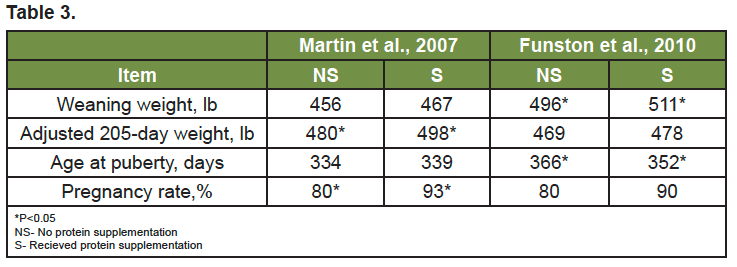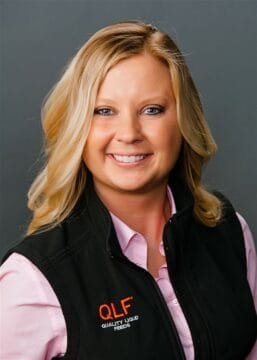by Chelsey Saavre, Beef Field Technical Services
The nutritional status of the cowherd prior to calving plays an important role in offspring growth performance and maternal reproductive efficiency. Two-thirds of fetal growth occurs within the last one third of gestation. This rapidly developing fetus dramatically increases maternal nutrient requirements. Throughout late gestation, maternal energy requirements increase by 25% as compared to mid-gestation, and protein needs increase by 10%. Demands for calcium and phosphorus increase due to fetal growth and preparation for lactation. In utero, placental and umbilical blood flow increase exponentially to support fetal growth and development.
Mammary Development
Late gestation nutrition impacts mammary gland development. Beef cows begin to produce colostrum 5 weeks before calving. Effective passive transfer of high-quality colostrum is vital to calf health and immunity. Studies have reported prepartum restriction of nutrients resulted in a decrease in colostrum quality and quantity. Milk production postpartum can be influenced by the prepartum nutrition of the dam. Cows receiving an energy deficient gestation diet during the last 90 days of gestation had lower milk production (Corah et al., 1975). Cows allowed limited rather than ad libitum grazing access during late gestation had a 9% decrease in early lactation milk production (Kearnan and Beal, 1992). Proper maternal nutrition prior to calving could impact postpartum milk production and passive immune transfer thus impacting offspring growth and health.
Body Condition Score
Proper body condition score at calving has been shown to influence pregnancy rates and interval from calving to pregnancy. Mature cows will likely gain at least 100 pounds throughout late gestation to accommodate fetal growth without losing body condition. Data would suggest that cows calving in a body condition score of 4 or less will have fewer cows rebred, longer postpartum interval, and wean a lighter, less uniform calf crop (Table 1).

Protein Supplementation
Forage quality and quantity may vary during the last 90 days of gestation, during which cows may undergo periods of undernutrition. A series of studies evaluated the effects of providing protein supplementation throughout late gestation on calf growth performance and carcass quality (Table 2). Steer calves from cows grazing native range with (S) or without (NS) protein supplementation were followed from birth to slaughter. The native range was determined not to meet the protein requirement of the cows during late gestation and protein supplementation was provided to one group to meet those requirements. Weaning weights were greater for steers born to cows that received protein supplementation during late gestation. Greater weaning weight of calves born to supplemented cows may be a result of increased milk production. The calves born to cows supplemented with protein had carcasses with higher marbling scores, a greater percentage of carcasses grading USDA Choice, and heavier hot carcass weights.

Additional studies evaluated the effects of growth and reproductive performance of heifer calves born to cows that received (S), or did not receive (NS) protein supplementation during late gestation (Table 3). Weaning weights and 205 adjusted weights were greater for heifers born to cows that received protein supplementation during late gestation. Greater weaning weight of calves born to supplemented cows may be a result of increased milk production. Heifers born to cows that were supplemented achieved puberty at younger ages and had greater pregnancy rates than heifers born to cows that did not receive protein supplementation. Researchers hypothesized that the increase in fertility and growth rate of heifer calves born from supplemented dams may be due to enhanced uterine blood flow and placental nutrient transfer.

Conclusion
Reducing feed costs while maintaining reproductive efficiency is key to producer profitability. A well-balanced supplementation program offered during late gestation can reduce negative effects caused by maternal nutrient deficiency. QLF offers a targeted liquid supplementation program for cow-calf operators directly impacting forage utilization, productivity, and herd health. These cow-calf products are designed to enhance forage utilization by supplying a source of degradable protein and energy optimizing ruminal fermentation critical for herd health, calf performance, and reproductive efficiency.

